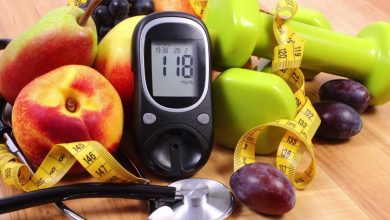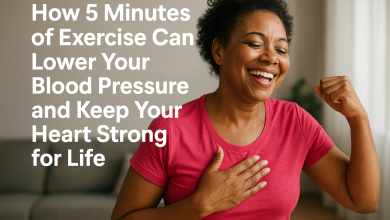What Is a Micro Walk? How This Simple Trend May Actually Make You Healthier

Introduction
We often hear that achieving 10,000 steps a day is essential for better health. But what if the secret lies instead in short bursts of activity—walks lasting just 10–30 seconds—scattered throughout your day? This is the idea behind micro‑walks (also known as “micro‑walking”), a growing trend supported by emerging science and celebrated for its simplicity and accessibility. In this article, we’ll break down what micro‑walks are, explore the benefits—from metabolism to mental health—explain the science, offer practical tips to adopt them, and show how they compare to other forms of activity.
1. What Exactly Is a Micro‑Walk?
A micro‑walk refers to a very short burst of walking, lasting typically 10 to 30 seconds, followed by a brief rest before moving again. These tiny strolls are deliberately spaced throughout one’s day and don’t require specialized gear or structured workout time.
The idea originates from a study published in Proceedings of the Royal Society B, which found that short bursts of walking—even around 10 seconds—burned significantly more energy per meter than longer continuous walks, up to 60% more under controlled conditions.
Despite covering the same distance, breaking walking into micro‑intervals triggers a larger metabolic response, almost like a car using more fuel in the first few kilometers of a journey—even though the total distance remains the same.
In everyday life, a micro‑walk could be pacing while on a phone call, strolling to the kitchen, climbing stairs for a moment, or stepping outside briefly—anything that breaks up sedentary sitting.
2. What’s Driving Interest: Why the Buzz around Micro‑Walks?
- Convenience: There’s no need to block out 30 minutes for a walk—you can micro‑walk anytime, anywhere: near your desk, in hallways, or while waiting for something.
- Attainability: It refocuses movement away from all‑or‑nothing thinking (“If I can’t do a full workout, why bother?”) toward consistent mini‑bursts, which feel manageable and less daunting.
- Realistic Daily Integration: Micro‑walks work well in office, home, and urban settings. No fancy tech or gym membership necessary—just your own two feet.
3. The Science: Research‑Backed Benefits
🌡️ Metabolic Boost & Calorie Burn
In the Milan‑based treadmill and stair‑climbing study, participants who did 10–30-second walking bursts burned up to 60% more energy than when walking continuously the same total distance. The rapid climbs in oxygen uptake during brief starts drive a higher calorie burn per meter.
Frequent starts and stops throughout the day may raise your overall metabolic rate and improve long‑term energy expenditure.
❤️ Heart & Circulation Benefits
Repeated short bursts of walking raise heart rate and improve circulation. Though each burst is brief, intermittent cardiovascular stimulation builds up over time, supporting heart health and vascular tone.
Additionally, breaking up long sitting periods—especially with frequent micro‑walks—has been shown to lower blood pressure and blood sugar markers over time.
🩸 Blood Sugar and Blood Pressure Regulation
A Columbia University study found that a 5‑minute walk every 30 minutes significantly reduced postprandial blood sugar spikes by up to 58%, compared to prolonged sitting. Even shorter walking bouts (1 minute every hour) lowered blood pressure slightly and improved mood and energy levels.
Although micro‑walks are shorter than the 5‑minute interval tested, they share the same principle of interrupting inactivity and activating leg muscles to improve glucose uptake—even at low intensity.
🧠 Mental Health & Cognitive Clarity
Short walks offer a mental reset: stepping away from screens or tasks, even briefly, can lower stress hormones, improve focus, foster creativity, reduce fatigue, and boost overall well‑being.
Rather than scrolling during breaks, just walking—even at your home desk—can have mental benefits.
🧘 Digestive Health
Gentle movement stimulates gut motility. Even a brief walk after meals—or micro‑walking soon after eating—can help relieve bloating, accelerate digestion, and ease standing blood sugar levels. (If practiced right after meals, this overlaps with the idea behind “post‑meal walks” or “fart walks” popular in social media circles—and in some medical literature discussed for glycemic control.)
4. Do Micro‑Walks Replace Longer Walks or Workouts?
Micro‑walks offer striking benefits, but they’re not a full replacement for longer or more intense aerobic exercise:
- A recent randomized controlled trial (on inactive women) found that three 10‑minute walks daily produced improvements, but the 30‑minute continuous walking group saw bigger gains in step counts, cardio endurance, and body composition.
- That said, micro‑walks are a strong strategy for those with sedentary jobs, limited time, or physical limitations—especially if used to supplement longer sessions or simply get moving more.
The ideal approach may combine both: micro‑walks to interrupt sedentary patterns plus longer walks or structured cardio (like brisk walking, interval walking, or jogging) when possible.
This mirrors the emerging public health consensus: even modest daily movement—like 5–7k steps—is associated with significant reductions in disease risk, even if you’re not hitting 10,000 steps.
5. Real‑World Impact: What the Latest on Step Goals Suggests
Recent large‑scale analysis in The Lancet Public Health of data from over 160,000 adults found that:
- ~7,000 steps/day is associated with a roughly 25% lower risk of cardiovascular disease, a 47% lower all‑cause mortality, and reductions in diabetes, cancer, dementia, and depression compared to just 2,000 steps.
- Benefits mostly plateau beyond that, though more activity is still positive.
Importantly, movement type and cadence matter: even moderate intensity sprinkled through the day—even via micro‑walks—contributes meaningfully.
This aligns with wider health advice: focus less on rigid step totals and more on consistent movement throughout the day—especially if you spend extended hours sitting.
6. How to Make Micro‑Walks Work for You
Set Reminders
- Use phone apps, smartwatch alarms, or sticky notes to stand and walk every 30–60 minutes, even for 20–30 seconds.
- Schedule these reminders early to build the habit.
Choose Practical Micro‑Walk Moments
- Between meetings, pacing in place or going to refill water.
- During phone calls, walking instead of sitting.
- After meals, take a quick stroll around the house or block—even 1 or 2 minutes counts.
- At work, walk to the restroom farthest away, choose stairs, or hold a walk‑and‑talk chat.
Keep It Simple and Intentional
- No need for special shoes—just walk with good posture and simple breathing.
- Slightly brisk pace is fine; it doesn’t have to be exercise intensity.
- Add optional challenge: a few seconds fast at the start, or climb a few stairs if available.
Track Your Progress
- Use a basic step counter, wearable, or phone to monitor cumulative steps.
- Set realistic goals: e.g. start with 5,000 steps/day and build toward 7,000–8,000 if possible. Micro‑walks naturally contribute to that count.
Make It Fun
- Listen to a podcast clip or song while walking.
- Invite coworkers or housemates for tiny walking breaks together.
- Reward yourself when you consistently break up sitting.
7. Who Should Prioritize Micro‑Walks?
Micro‑walks are especially valuable for:
- Office workers and people with desk-bound routines.
- Individuals with health constraints or limited mobility.
- People struggling to find time for longer workouts.
- Anyone looking to build sustainable movement habits without getting overwhelmed.
They’re particularly effective as a complement to structured exercise—not a replacement for cardiovascular or strength training—but they greatly reduce the harms of prolonged inactivity.
8. Comparison: Micro‑Walks vs. Other Methods
| Method | Duration & Format | Key Benefits | Limitations |
| Micro‑walks | 10–30 sec bursts, frequent | Easy to integrate, breaks sitting, increases cal burn per meter, mental reset | Not sufficient alone for cardio endurance or strength gains |
| 5‑minute walks every 30 min | 5 min every 30 min | Better blood sugar control, BP reduction, fatigue relief | Requires more consistent attention |
| Long continuous walks (30+ min) | 20–45 min | Builds endurance, calorie burn, improves body comp | Harder to fit into short breaks; time commitment |
| Interval walking (e.g. Japanese IWT) | Alternating fast/slow 3 min segments | Cardiovascular improvement, reduced BP, insulin sensitivity | Needs structured session, time commitment |
The best approach often combines micro‑walks to interrupt sedentary time with occasional longer or interval walks when time permits.
9. Tips to Stay Safe and Effective
- Listen to your body: Start gently, especially if you’re unaccustomed to moving. Even a few seconds of walking is fine.
- Wear comfortable shoes, especially if you’ll take many small steps across the day.
- Hydrate and stretch lightly if you feel stiff—broken posture from sitting can lead to aches.
- If you have health issues (heart disease, diabetes, mobility problems), talk to a doctor about pacing and modifications.
10. Real-Life Examples & Anecdotes
- People who tested walking 20,000 steps/day for two weeks reported better sleep, mental clarity, and boosted energy—but noted fatigue and time stress too.
- Yet many experts emphasize that even ~7,000 steps per day, reliably achieved, is linked to dramatic reductions in risk of chronic diseases or early death.
- Micro‑walks are designed as a sustainable, pressure‑free way to build toward those step counts and break sedentary habits without burnout.
Conclusion: Small Steps, Big Difference
- Micro‑walks are brief 10–30‑second walking bursts you sprinkle throughout the day.
- Research shows they burn more energy per meter than continuous walking—by up to 60% more—even though distances are small.
- They reduce blood pressure, control blood sugar spikes, improve circulation, support mental clarity, and improve digestion, especially when used to break up long sitting periods.
- Pair micro‑walks with a modest daily step goal—say 7,000 steps—to reap disease‑prevention and longevity benefits without stress or strenuous routines.
- Most importantly, micro‑walking reframes exercise: movement becomes a series of tiny, doable habits instead of a daunting time block.
So the next time you feel stuck at your desk, choose stairs, pace while on the phone, or simply stand and walk for 20 seconds. It might feel small—but cumulatively, it may be one of the simplest shifts you make for long‑term health.




